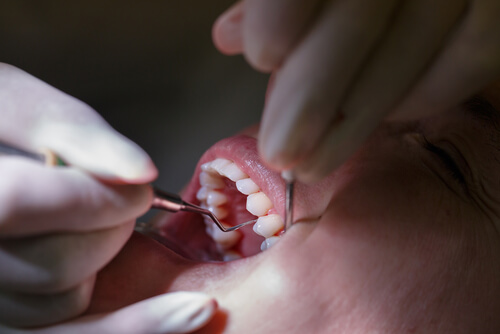“Frenectomy ruined my smile” — a phrase that might resonate with those experiencing unexpected aesthetic changes post-procedure. This article delves into the reasons behind such outcomes and discusses both preventive measures and corrective options. As we unravel the complexities of dental procedures and their impacts, join us in understanding why a frenectomy might alter your smile and how to address these changes effectively. Stay tuned for insights that could help improve not just your smile but also your confidence.
Introduction to Frenectomy: What It Is and Why It’s Performed
A frenectomy is a surgical procedure doctors use to address issues related to the frenum, a small band of tissue found in various parts of the mouth. This procedure is commonly performed to improve oral function and appearance, and it can be essential for both health and aesthetic reasons.
Purpose and Types
There are two main types of frenectomy—labial and lingual. A labial frenectomy is done on the tissue linking the upper or lower lip to the gums, often due to a lip tie that can affect the gap between the front teeth or restrict lip movement. A lingual frenectomy targets the frenum attaching the tongue to tissues in the floor of the mouth, commonly known as a tongue tie, which can impair speech or swallowing.
Indications for Surgery
The procedure is typically indicated for those who experience complications such as speech problems, eating difficulties, or issues related to orthodontic treatment, such as a gummy smile or tight spacing between teeth. In infants, a frenectomy might be necessary to improve breastfeeding issues when a tongue tie restricts the tongue’s range of motion.
Surgical Techniques
A frenectomy can be performed using traditional surgical scissors or a laser, which offers benefits like reduced bleeding, swelling, pain, and discomfort. The choice of technique depends on the individual’s specific needs and the healthcare professional’s expertise.
Impact on Oral Health
Beyond functional improvements, frenectomies can also prevent other oral health problems, such as gum recession, tooth decay, and gum disease, by eliminating the abnormal pull of the frenum on gums or teeth.
How a Frenectomy Can Impact Your Smile: Understanding the Aesthetic Risks
A frenectomy, while often necessary for functional or health reasons, can also have significant aesthetic implications for one’s smile. Understanding these potential risks is crucial for anyone considering this procedure.
1. Changes to Lip and Gum Contours: Removing the frenum tissue can alter how the lip rests against the upper gums and teeth. In cases involving the labial frenum, which connects the lips to the gum near the upper front teeth, a frenectomy may change the fullness and position of the lip, impacting the smile’s overall appearance.
2. Impact on Tooth Alignment: Especially in younger patients, a frenectomy to address a gap between the front teeth may lead to shifts in tooth alignment post-procedure. While this can be beneficial in reducing gaps, it may also create unexpected changes that might require orthodontic intervention.
3. Gum Aesthetics: A frenectomy involving the gum tissue can sometimes lead to aesthetic changes in the gums themselves, such as uneven gum lines or changes in gum thickness. These alterations can affect how much of the tooth is exposed when smiling and may lead to what some perceive as a “gummy” smile.
4. Healing and Scar Formation: The healing surgical recovery process following a frenectomy is another factor that can impact one’s smile. Improper healing or significant scar tissue formation at the site of the incision can lead to stiffness in the mouth or visible scars that affect the smile.
5. Emotional and Psychological Impact: The immediate change in appearance after a frenectomy can sometimes have emotional or psychological effects. Individuals might feel self-conscious about their new smile, particularly if the results were unexpected.
Personal Stories: Real Experiences Where Frenectomy Affected Smiles
Exploring the personal stories of individuals who have undergone a frenectomy can provide valuable insights into the varied outcomes of this procedure, particularly its impact on smiles. These real-life experiences highlight the importance of setting realistic expectations and understanding potential aesthetic changes.
Improved Function with Aesthetic Adjustments: Many individuals report a significant improvement in oral functions, such as easier speaking and eating, post-frenectomy. However, these functional gains sometimes come with adjustments to their smile aesthetics. For instance, lip positioning or gum contour changes can alter how the smile appears, which might take some getting used to.
Positive Transformations: Some personal stories reflect positive transformations where the frenectomy solved functional problems like speech impediments or eating difficulties and enhanced the person’s smile by correcting issues like a pronounced gap between the front teeth or a gummy smile.
Challenges in Adjustment: In other cases, individuals have experienced unexpected results, such as a change in the fullness of the upper lip, leading to a smile they felt needed time to adjust to or further cosmetic treatment to refine.
Need for Additional Treatments: It’s not uncommon for stories to include the need for subsequent orthodontic treatment to align teeth properly after a frenectomy that has altered the dental framework, especially in younger patients where the growth and development of oral structures continue post-procedure.
Emotional Impact: The emotional response to changed smiles is a recurrent theme in these narratives. While many embrace their new smiles confidently, others may initially struggle with their altered appearance, underscoring the need for supportive counseling and follow-up care.
Corrective Measures: Options for Restoring Your Smile Post-Frenectomy

Several corrective measures are available for individuals experiencing aesthetic changes to their smile after a full frenectomy procedure to help restore and even enhance their smile’s appearance. These options cater to different needs, ensuring each person can achieve a satisfactory outcome.
Orthodontic Treatment:
One of the most common corrective measures following a frenectomy is orthodontic treatment. This can realign teeth that may have shifted unexpectedly or close gaps that the procedure has affected. Depending on the extent of the alignment needed, this might involve braces or clear aligners.
Cosmetic Dentistry
Techniques such as veneers or bonding can be employed to correct any changes in the appearance of teeth post-frenectomy. Veneers are particularly useful for achieving a uniform look, covering any aesthetic flaws that may arise after the procedure.
Gum Contouring
If the frenectomy results in a gummy smile or uneven gum lines, gum contouring can be an effective solution. This procedure reshapes the gum tissue to create a more balanced and aesthetically pleasing smile.
Lip Fillers
For changes in the lip’s fullness or position due to a labial frenectomy, lip fillers can provide a non-invasive option to enhance lip volume and aesthetics, complementing the smile post-procedure.
Therapeutic Approaches
Sometimes, the physical changes post-frenectomy are minimal, but the individual’s perception of their smile changes significantly. In such cases, therapeutic approaches like counseling can help individuals adjust to their new appearance and regain confidence.
Preventing Negative Outcomes: Tips for Choosing the Right Dental Specialist
Choosing the right dental specialist is critical to preventing negative outcomes from dental procedures such as a frenectomy. Making an informed decision can greatly impact both the success of the procedure and your overall satisfaction with the results. Here are some key tips to help ensure you select the best dental specialist for your needs:
- Check Credentials and Specializations: Verify the dental specialist’s qualifications and certifications. Look for practitioners with specialized training in oral surgery or periodontics, as these professionals are typically well-equipped to handle procedures like frenectomies.
- Evaluate Experience and Expertise: Consider the experience level of the dental specialist. Those who have performed numerous frenectomies are likely more adept at managing various scenarios and preventing complications. Ask about their specific experience with the type of frenectomy you require (labial or linguistic).
- Read Patient Reviews and Testimonials: Patient reviews can provide insights into the specialist’s practice. Look for feedback regarding their technique, outcomes, and how they handle post-operative care. Positive reviews can be a good indicator of satisfaction, while negative reviews may highlight potential red flags.
- Consultation and Communication: Schedule a consultation to discuss your needs and concerns. This meeting can give you a sense of the dentist’s communication style and approach to patient care. A good specialist will make you feel informed and comfortable, explaining the procedure, potential risks, and expected outcomes.
- Technological and Procedural Advancements: Inquire about the technology and methods used in their practice. Specialists who utilize the latest technologies, such as laser frenectomy, may provide more precise and less invasive treatment options.
- Professional Affiliations: Check if the specialist is affiliated with professional dental associations or societies. Membership in these organizations often requires meeting certain professional standards, which can be reassuring.
- Consider the Office Environment: The environment of the dental office can also be an indicator of the quality of care. A clean, well-organized, and equipped office generally reflects a professional practice.
- Post-Operative Support: Understand the kind of follow-up and emergency care the specialist offers. Knowing that you have access to the specialist or their team after the procedure can ease concerns about managing recovery and potential complications.
In conclusion, if you feel that a frenectomy ruined your smile, you’re not alone. Many face unexpected aesthetic changes following this simple procedure, too. However, effective solutions and skilled professionals are ready to help restore your smile’s appearance. By understanding the potential impacts and exploring corrective options, you can regain confidence and achieve your desired smile.
References
‘Just a snip,’ I was told. But that was just the beginning of my troubles.
https://www.washingtonpost.com/national/health-science/just-a-snip-i-was-told-but-that-was-just-the-beginning-of-my-troubles/2014/07/21/270b4d78-f569-11e3-a606-946fd632f9f1_story.html
Will a frenectomy improve my smile? (photos)
https://www.realself.com/question/atlanta-ga-frenectomy-improve-smile
Frenectomy (Tongue-Tie Surgery): Procedure & Recovery
https://my.clevelandclinic.org/health/treatments/22714-frenectomy
Anterior rehabilitation involving dental bleaching, a frenectomy surgery, and composite resin: a case report
https://www.researchgate.net/figure/Upper-labial-frenectomy-A-Surgical-technique-to-remove-the-upper-lip-frenulum-B_fig4_344201949
Can a frenectomy alter a person’s smile?
https://www.healthtap.com/questions/396362-can-a-frenectomy-alter-a-person-s-smile-our-dentist-has-recommended-that-our-son-have-a-frenectomy




